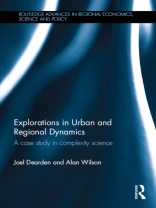The task of modelling the evolution of cities – the dynamics – is one of the major challenges of the social sciences. This book presents mathematical and computer models of urban and regional dynamics and shows how advances in computer visualisation provide new insights. Models of non-linear systems in general have three characteristics: multiple equilibria, ‘path dependence’ over time and phase transitions – that is, abrupt change at critical parameter values. These phenomena all exhibit themselves in reality, and it is an ongoing task to match model-based analysis with real phenomena. There are three key features of cities and regions to be represented in models: activities at a location – residence, health, education, work and shopping; flows between locations – spatial interaction; and the structures that carry these activities – buildings, transport and communications networks. Spatial interaction and many elements of activities’ location can be modelled by statistical averaging procedures, which are related to Boltzmann’s methods in statistical mechanics. This is while the evolution of structure can be represented in equations that connect to the Lotka-Volterra equations in ecology. Within this broad framework, alternative approaches can be brought to bear. This book uses entropy-maximising versions of spatial interaction models. The authors explore the dynamics in more detail, using advanced visualisation techniques. These ideas have wide potential uses, and the book illustrates this with applications in history and archaeology.
Joel Dearden & Alan Wilson
Explorations in Urban and Regional Dynamics [EPUB ebook]
A case study in complexity science
Explorations in Urban and Regional Dynamics [EPUB ebook]
A case study in complexity science
Buy this ebook and get 1 more FREE!
Language English ● Format EPUB ● Pages 140 ● ISBN 9781317698524 ● Publisher Taylor and Francis ● Published 2015 ● Downloadable 3 times ● Currency EUR ● ID 4107015 ● Copy protection Adobe DRM
Requires a DRM capable ebook reader












